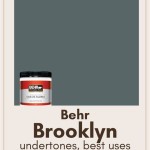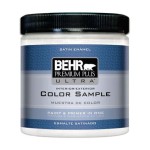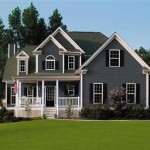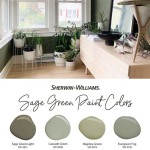Deciding On The Perfect Fence Paint Colors
Selecting the ideal paint color for a fence involves more than just picking a favorite hue. It requires a thoughtful consideration of various factors, including the surrounding landscape, architectural style of the property, desired aesthetic impact, and the practical aspects of longevity and maintenance. A well-chosen fence color can enhance curb appeal, provide a visual complement to the home, and effectively define property boundaries. Conversely, a poorly selected color can clash with the overall aesthetic, detract from the home's value, and require frequent repainting.
The process of choosing the right fence paint color is a multi-faceted task that should not be undertaken lightly. It necessitates a careful evaluation of the existing environment, the desired impact of the fence, and the long-term implications of the chosen color. Ignoring these considerations can lead to dissatisfaction with the final result and potentially costly rework. This article will explore the key aspects to consider when deciding on the perfect fence paint color for any property.
Considering the Architectural Style and Home's Exterior Colors
The architectural style of the home and its existing exterior colors play a crucial role in determining the suitable fence paint colors. A cohesive look is generally achieved by selecting colors that either complement or subtly contrast with the home's dominant hues. For instance, a traditional home with a light gray exterior might benefit from a white or off-white fence, creating a classic and timeless appearance. Conversely, a modern home with bolder colors might warrant a darker fence color, such as charcoal gray or even black, to create a striking visual contrast.
It's important to analyze the undertones of the home's exterior colors. Are the colors warm or cool? Matching the undertones in the fence paint can create a harmonious blend. For example, a brick home with warm red undertones might pair well with a fence painted in a warm brown or beige. Choosing a fence color with cool undertones could create a jarring contrast. Furthermore, the material of the home's exterior should be considered. Wood siding, brick, stucco, and vinyl each have unique textures and colors that will interact differently with the fence color.
Pay attention to the details of the home's exterior, such as trim color, roof color, and landscaping elements. The fence color should ideally coordinate with these elements to create a unified and aesthetically pleasing design. If the home has white trim, a fence in a similar shade of white can create a seamless transition. Conversely, if the home has dark trim, a slightly darker fence color can provide a subtle contrast while maintaining a cohesive look. The goal is to create a sense of balance and harmony between the home and its surroundings.
When considering architectural style, historical context can also be important. Certain architectural styles are associated with specific color palettes. For example, Victorian homes often feature elaborate details and are commonly painted in light, pastel colors. A fence surrounding a Victorian home might benefit from a white or cream color with decorative elements that echo the home's architectural details. Similarly, Craftsman-style homes typically feature earth tones and natural materials. A fence surrounding a Craftsman home might be stained or painted in a natural wood tone or a muted green or brown.
Analyzing the Surrounding Landscape and Environment
The surrounding landscape and environment exert a significant influence on the perceived color of a fence. The natural colors of plants, trees, and the terrain can either enhance or diminish the appeal of a particular fence color. When selecting a fence paint color, carefully observe the colors that dominate the surrounding area. Is the landscape primarily green and lush, or is it more arid and brown? The answer to this question will help guide the color selection process.
In a lush, green environment, a fence painted in a natural wood tone or a muted green can blend seamlessly with the surroundings. These colors create a sense of harmony and allow the natural beauty of the landscape to take center stage. Conversely, a dark or bold color might stand out too much and create a visual distraction. In an arid environment, a lighter fence color can reflect sunlight and help to keep the area cooler. A dark fence color might absorb too much heat and become uncomfortable to touch. Earthy tones such as browns, tans, and beiges also work well in arid environments.
Consider the level of sunlight that the fence will receive. Direct sunlight can fade certain colors over time, so it's important to choose a paint that is resistant to fading. Dark colors tend to absorb more heat and are more susceptible to fading than lighter colors. If the fence is located in a shady area, a lighter color can help to brighten up the space. The color of the soil and any nearby bodies of water can also influence the perceived color of the fence. Reddish soil, for example, might complement a warm brown fence color, while a blue lake might contrast nicely with a white or gray fence.
The size and scale of the property should also be considered. On a large property, a fence can serve as a strong visual element and can be painted in a more bold color. On a smaller property, a fence might need to blend more seamlessly with the surroundings and should be painted in a more muted color. The overall goal is to create a sense of visual balance and harmony between the fence, the home, and the surrounding landscape.
Understanding the Psychological Impact and Aesthetic Goals
Color has a profound psychological impact and can significantly influence the overall aesthetic of a property. When choosing a fence paint color, consider the desired mood and atmosphere. Do you want to create a sense of tranquility and relaxation, or do you want to create a more vibrant and energetic space? Different colors evoke different emotions and can be used to create various effects.
White is often associated with cleanliness, purity, and simplicity. A white fence can create a sense of openness and can make a small yard feel larger. It is a classic and timeless choice that works well with a variety of architectural styles. Black, on the other hand, is often associated with sophistication, elegance, and power. A black fence can create a strong visual statement and can add a touch of drama to a property. It is a popular choice for modern and contemporary homes.
Gray is a versatile color that can be used to create a variety of effects. Light gray can create a sense of calmness and serenity, while dark gray can create a more dramatic and sophisticated look. Gray works well with a variety of architectural styles and can be paired with a variety of accent colors. Brown is often associated with nature, warmth, and stability. A brown fence can blend seamlessly with the surrounding landscape and can create a sense of harmony. It is a popular choice for rustic and traditional homes.
Green is often associated with nature, growth, and tranquility. A green fence can create a sense of peace and relaxation and can blend seamlessly with the surrounding landscape. It is a popular choice for properties with lush gardens. Blue is often associated with calmness, serenity, and peace. A blue fence can create a relaxing and inviting atmosphere and is a popular choice for coastal properties. Ultimately, the best fence paint color is the one that best reflects your personal style and preferences while also complementing the overall aesthetic of the property.
Think about the purpose of the fence. Is it primarily for privacy, security, or decoration? A privacy fence might benefit from a darker color to create a sense of enclosure and security. A decorative fence might be painted in a lighter color to draw attention to its design elements. The desired level of formality should also be considered. A formal garden might benefit from a white or black fence, while a more casual garden might be better suited to a natural wood tone or a muted color.
Before making a final decision, it is advisable to test a small sample of the chosen color on a section of the fence. This will allow you to see how the color looks in different lighting conditions and how it interacts with the surrounding environment. It is also important to consider the long-term maintenance requirements of the chosen color. Dark colors tend to show dirt and scratches more easily than lighter colors. Light colors can be more prone to fading and mildew growth. Choosing a high-quality paint and properly preparing the fence surface can help to minimize these issues.
In conclusion, the process of selecting the perfect fence paint color involves a careful consideration of various factors, including the architectural style of the home, the surrounding landscape, the desired aesthetic impact, and the practical aspects of longevity and maintenance. By taking the time to evaluate these factors, homeowners can ensure that their fence not only enhances the curb appeal of their property but also provides lasting beauty and functionality.

Choosing The Right Colour For Your Fence Makeovers

Best Fence Paint Colors For Your Home

Best Colour For Fences In Small Gardens

The Best Colours For Your Property Fencing

Choosing The Right Colour For Your Fence Makeovers

Tips For Choosing Paint Color Your Fence Pentagon Fencing Gates

Which Fence Paint Is Best Top 5 Paints

Best Fence Paint Colors For Your Home

Do S And Don Ts For Choosing The Right Fence Colour Maria Killam

Best Paint For Fencing Reviews Comparison Table
Related Posts








